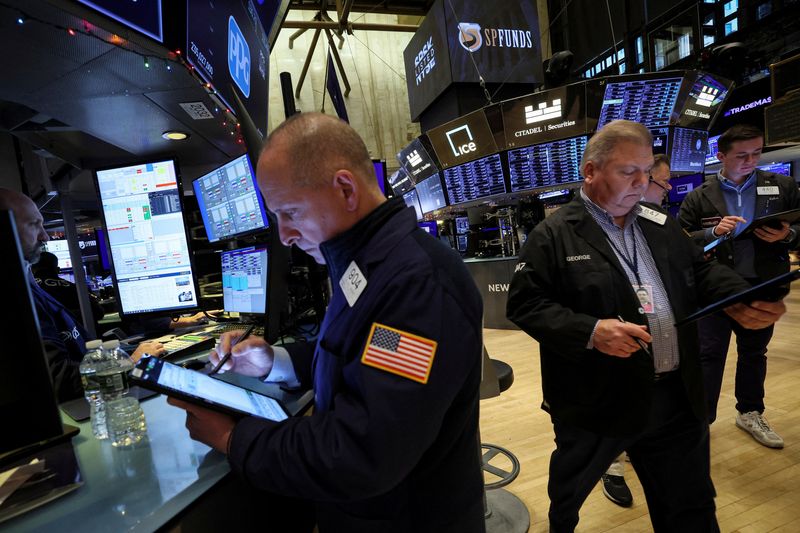By Lucy Raitano
LONDON (Reuters) - Investors shed stocks at the highest weekly rate ever in the week to Wednesday, selling a net $41.9 billion of equities, according to a report from BofA Global Research on Friday that attributed the sell-off to tax-related purposes.
U.S. value funds and passive equities also recorded record weekly net outflows, of $17.2 billion and $27.8 billion respectively, the bank said.
BofA said "tax loss harvesting" was behind the record outflows, a strategy that involves selling assets at a loss to offset capital gains taxes.
Investors also reduced their cash holdings by a net $59.5 billion, the biggest drop since February 2022, and sold the largest quantity of investment grade and high yield bonds in nine weeks.
Local emerging market bonds drew their first net inflow since April, while emerging market equities recorded a third week of inflows, adding a net $3.2 billion.
The sell-off in equity holdings came in a week where investors were rattled by the Bank of Japan's surprise monetary policy tweak on Tuesday.
With an historic approach of ultra-low interest rates, deflationary Japan has set the 'floor' for global rates for the past 30 years, BofA said, adding that this floor would now be higher with the planned end of the BoJ's yield-curve control in 2023.
As a result, the bank's analysts said they preferred commodities over credit, 'rest of the world' stocks over U.S. stocks, and small (caps) over large. On a sector basis they favour value over growth, and industrials and banks over tech and private equity.
Stocks took a hit last week after several major central banks raised interest rates, including the Federal Reserve and the European Central Bank (ECB), along with warnings that more hikes are needed to curtail inflation.

The U.S. benchmark S&P 500 has fallen 3.6% in the last ten days and is at a more than six-week low, while the pan-European STOXX 600 index retreated from a six-month high last week.
Bond funds recorded net outflows of $10 billion, prompting a small drop in BofA's "Bull & Bear" indicator to 3 from 3.1 last week - which was its highest since March 15th.